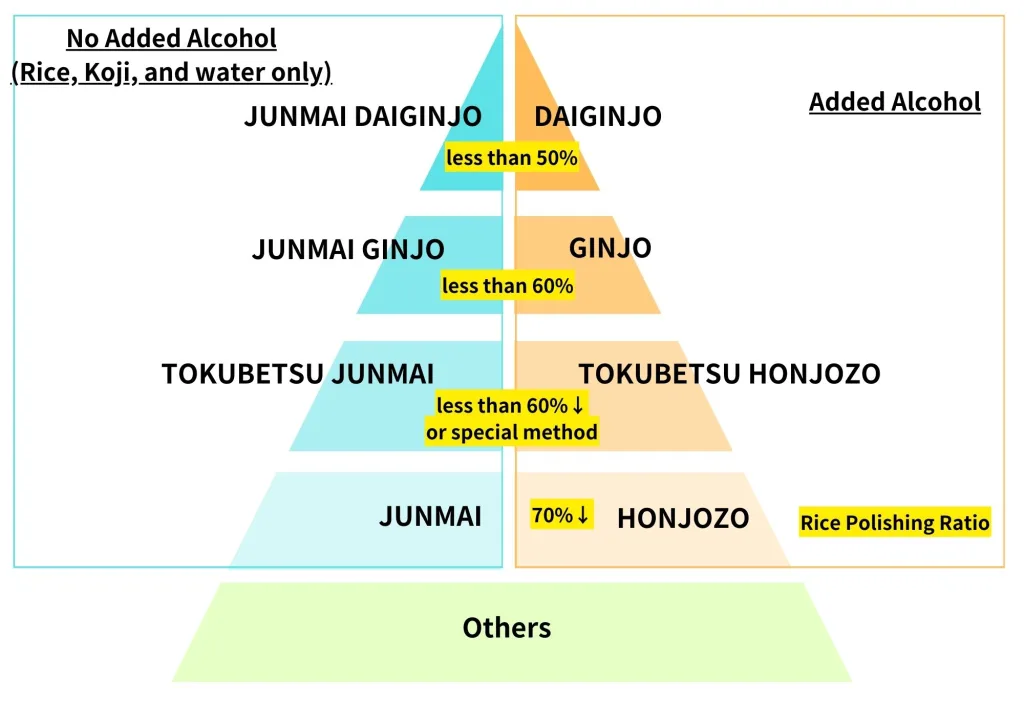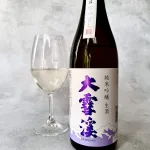How to Choose the Right Sake: A Beginner’s Guide to Types and Flavor Profiles
If you’ve ever looked at a Sake menu and felt overwhelmed, you’re not alone. With so many unfamiliar names and terms, choosing the right Sake can be confusing at first. But once you understand a few basics, picking the perfect bottle becomes much easier—and a lot more fun.
In this guide, we’ll explore the different types of Sake based on ingredients and brewing methods, as well as how flavor and aroma play a role. By the end, you’ll feel more confident selecting Sake that matches your taste and occasion.
What Makes Sake Unique?
Sake is a traditional Japanese alcoholic beverage brewed from rice, water, and a special mold called koji. What sets Sake apart is the rice polishing process, where the outer layers of the rice are milled away to reveal the starchy core. The more the rice is polished, it is considered that the cleaner and more refined the flavor tends to be.
Another important distinction is whether additional alcohol is added during brewing. This affects both flavor and style, and helps define the various categories of Sake.
Types of Sake Based on Ingredients and Brewing Method
There are eight main types of Sake you’ll commonly find, classified by their ingredients and how much the rice is polished. These categories are usually labeled on the bottle, making them easy to recognize.

With Additional Alcohol ( Ginjo Type)
1. Daiginjo-shu
An even more refined version of Ginjo, with 50% or more of the rice polished away. It’s elegant, aromatic, and considered a premium Sake. Best enjoyed cold.
2. Ginjo-shu
Made with highly polished rice (at least 40% removed) and a small amount of added alcohol. It has a light, fruity, and floral aroma—perfect served chilled.
3. Honjozo-shu (Honjozo Sake)
Brewed with added alcohol and a polishing ratio of 70% or less. Light, crisp, and easy to drink—great for beginners.
4. Tokubetsu Honjozo-shu (Special Honjozo Sake)
A more refined version of Honjozo made with better-polished rice or a special brewing method. It has a dry, clean finish with a touch of personality.
Without Additional Alcohol (Junmai type)
1. Junmai Daiginjo-shu
The most refined style of pure rice Sake. With at least 50% of the rice polished away, this type has a clean, delicate taste and melon-like aroma. Best served chilled.
2. Junmai Ginjo-shu
Combines the floral aroma of Ginjo with the richness of Junmai. With a polishing ratio of 60% or less, this is a great balance of fragrance and rice flavor.
3. Tokubetsu Junmai-shu
“Special” Junmai made with a rice polishing ratio of 60% or less, or brewed using a distinctive method. Each bottle reflects the brewer’s individual style.
4. Junmai-shu
Brewed with only rice, water, and koji—no added alcohol. The flavor is richer and fuller, with a deep umami from the rice. It can be enjoyed chilled, warm, or at room temperature.
Other types
Nigori, Umeshu, sparkling – there are more types not fall into the above basic 8 types of sake.
Which Sake Is Right for You?
If you’re just starting out, try a few different types and take notes on what you like. Here’s a quick guide:
| If you like… | Try this type of Sake |
|---|---|
| Fruity, floral aromas | Daiginjo / Ginjo |
| Rich umami and depth | Junmai / Junmai Ginjo |
| Crisp and easy-drinking | Daiginjo / Honjozo |
| Bold, aged flavors | Honjozo / Junmai |
Sake Is More Than Categories: Discovering Your Own Flavor Journey
A Good Starting Point, But Only the Beginning
The traditional classifications—Junmai, Ginjo, Daiginjo, and so on—are great for understanding the basics of Sake. They give you a solid foundation and are helpful when browsing labels or ordering at a restaurant. But remember, these are just the tip of the iceberg.
Sake Is Evolving Beyond Labels
In today’s Sake world, many bottles don’t even include these classic category names. Why? Because brewers are crafting flavors that transcend traditional definitions. From the rice variety to the water source, from fermentation techniques to regional character—modern Sake is shaped by countless subtle elements. That means you can now find incredibly expressive, complex Sake that doesn’t fit neatly into any one box.
Talk to Someone Who Knows
When choosing a bottle, the most valuable tip isn’t just to read the label—but to talk to someone who knows. Whether you’re in a shop, at a brewery, or dining at a restaurant, don’t hesitate to describe what you like: fruity or dry, bold or smooth, light or rich. Let the staff guide you based on your preferences. This personal approach often leads to the most satisfying discoveries.
Joining the sake brewery tour is another ways to find your flavor!
Keep Exploring
The beauty of Sake is that every bottle offers a different story, and tasting is the best way to learn. Don’t feel pressured to memorize all the terms—just enjoy the journey. Try different styles, pair them with food, and find what speaks to you.
Kanpai—and happy exploring!


